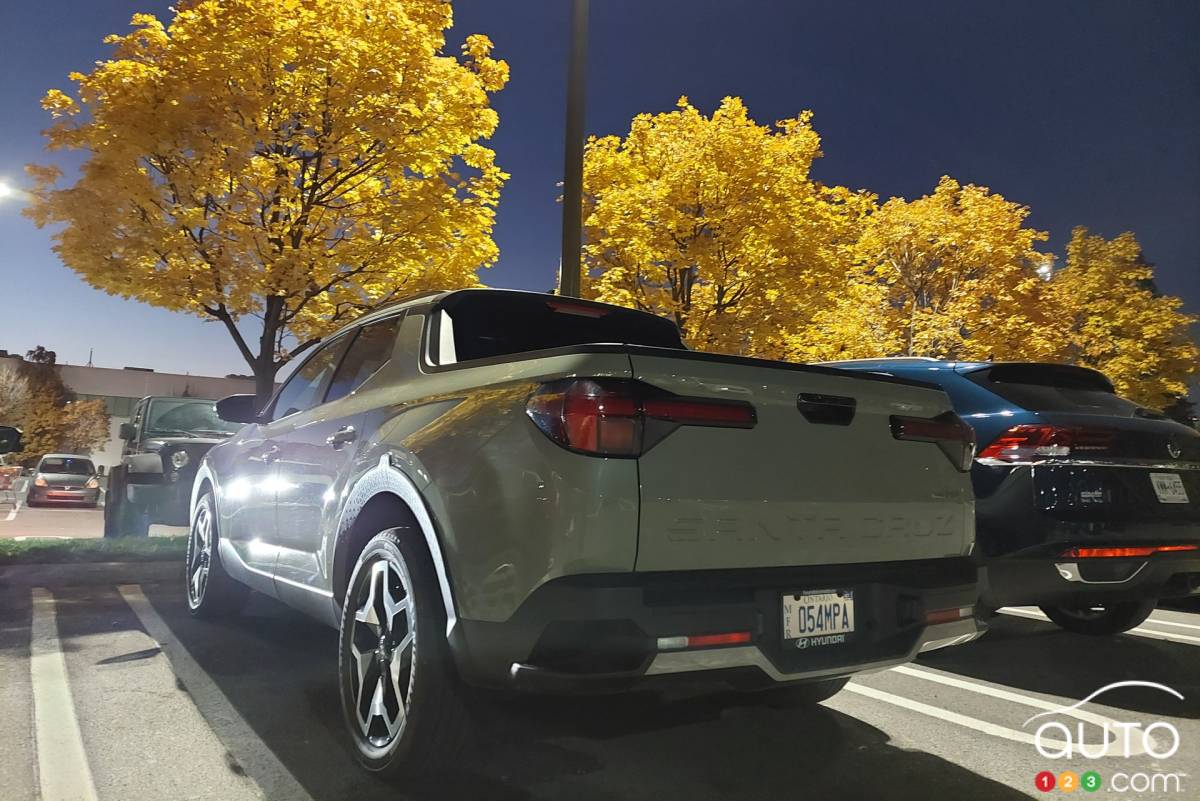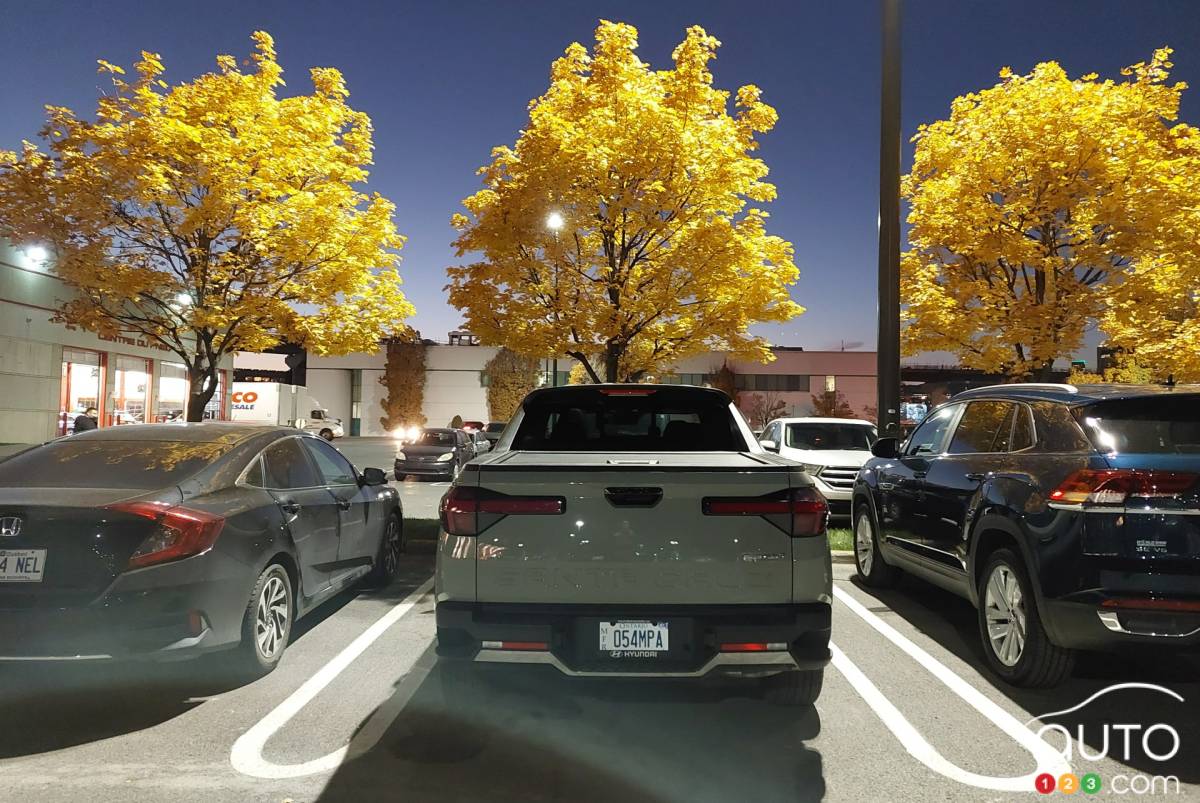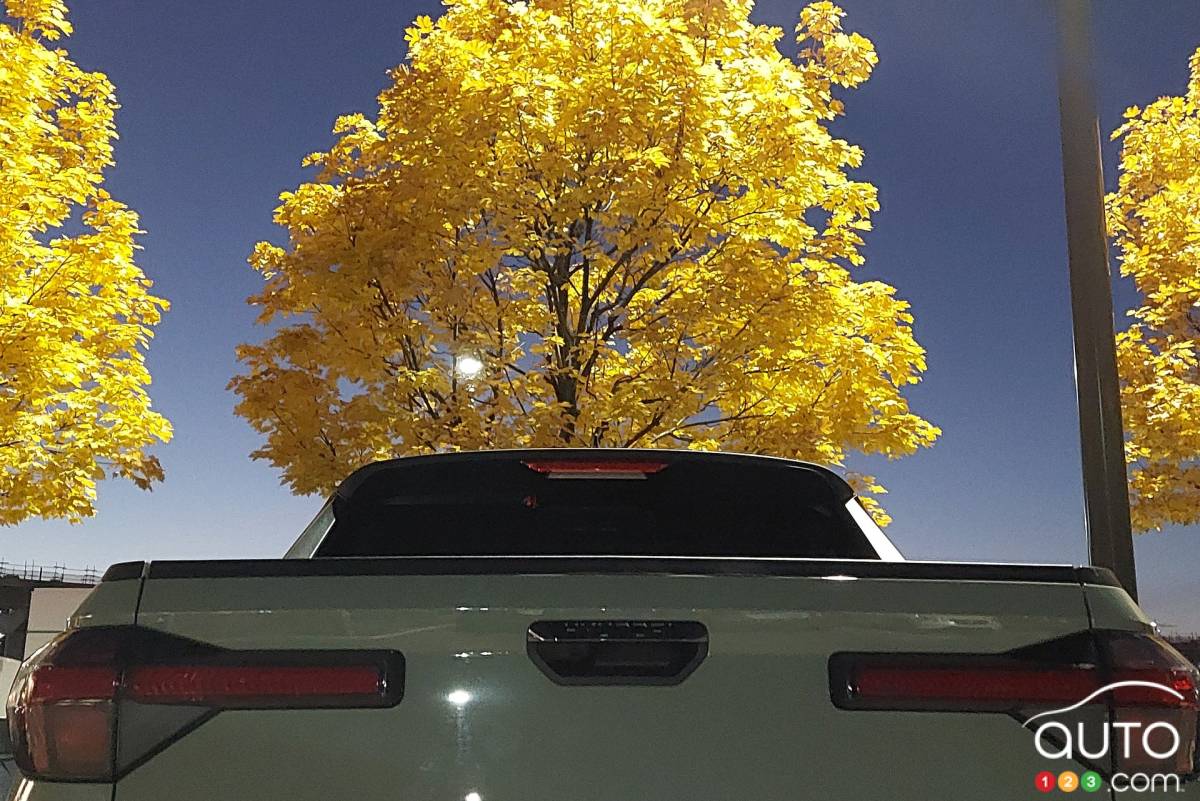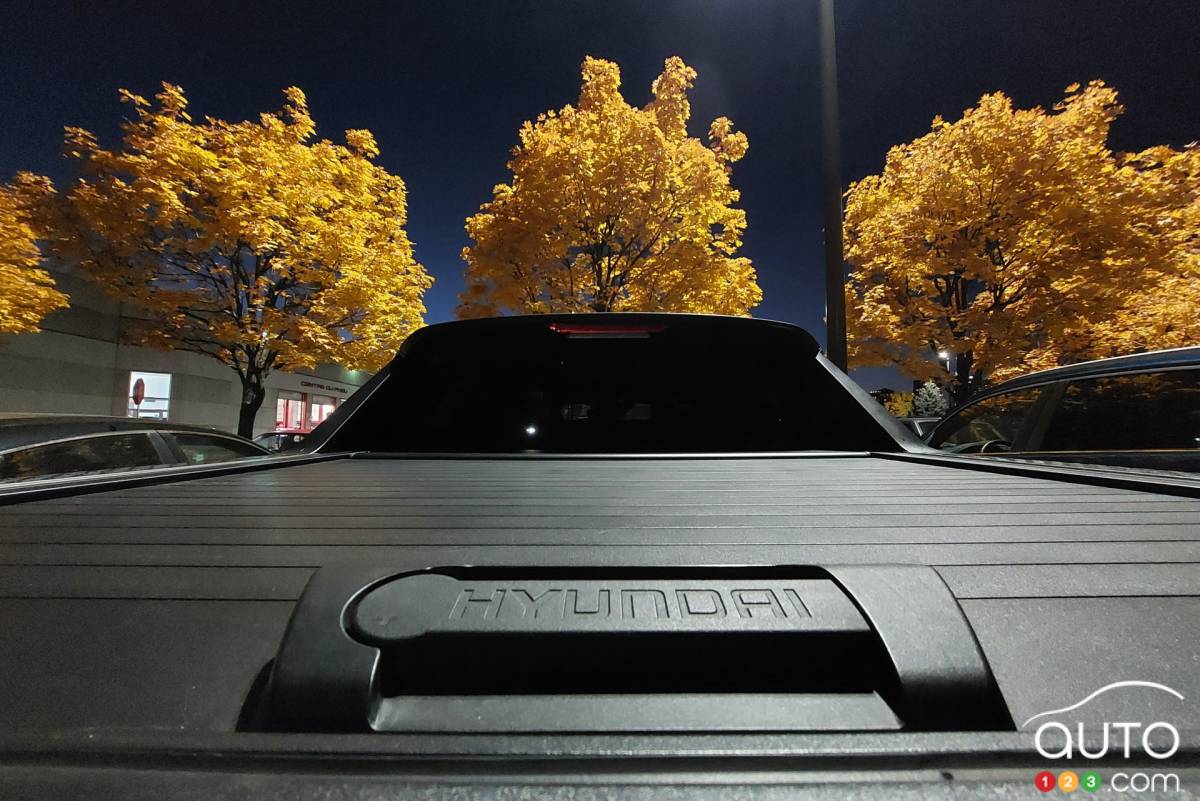Auto123 takes the 2022 Hyundai Santa Cruz compact pickup/Sport Adventure Vehicle on a safari through the urban jungle.
The long-awaited new Santa Cruz pickup from Korean automaker Hyundai may be “small” for a truck but you can’t say it’s shy about announcing its presence. The SANTA CRUZ lettering on the back hatch is prominent – 7 cm in height. I measured. Confidence? You bet.
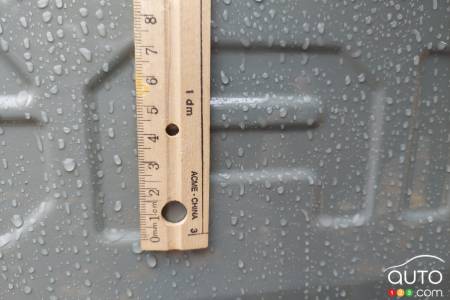
The front end also emits a confident vibe, what with its big bold, vertical front snout with the innovative split lighting design and sharp-looking front grille elements; the look is very similar to what we’ve seen on the latest editions of the Santa Fe and Tucson. Very.
Now, that confidence may look faintly misplaced when you pull up at a light alongside a fully decked Ram 1500 on big wheels. You may just look up at its cab’s window to find the occupant snickering slightly at this puny, citified vehicle next to them, playing at being a pickup.
Truck?
For sure, “truck” is maybe not the most accurate description for what is in essence something between a Tucson and a Santa Fe with a bed where the cargo space normally is. Anyways, Hyundai itself doesn’t even call it a pickup, its marketing team having come up with a new description for it that I can almost guarantee won’t catch on: Sports Adventure Vehicle. However you refer to it, this is a vehicle the conception of which is more inspired by SUVs than trucks. Call it the Ridgeline school of design.
You can also call the drive this thing offers SUV-esque. Sit inside and, if it wasn't for the differently-framed view when you check in your rearview mirror, you’d pretty quickly forget you’re not in a regular old SUV. Like… a Tucson for instance. For one thing, you’re not sitting so high off the ground, like in a Ram or F-150. You’re on the same level as all the compact and mid-size SUVs around you in traffic. It’s all very democratic that way. For another, the Santa Cruz handles like an SUV when the traffic starts to move (it’s built on a unibody platform), and it parks like one when you arrive at destination. (Its dimensions are between the smaller Tucson and the larger Santa Fe). And along the way, it consumes more or less the amount of fuel a Santa Fe does.
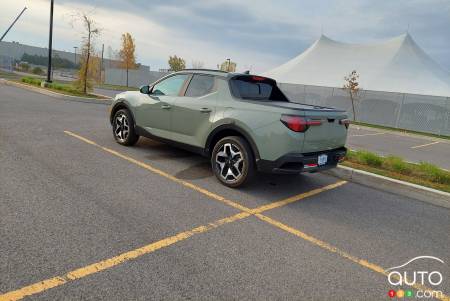
All of that is good news for the urban dweller with a taste for out-of-city adventures or weekend cottage chores that is the model’s most likely buyer. But if that urban dweller is looking for a weekend warring companion, like Honda’s Ridgeline or this new rival to it, it’s because they want something different. Like a bed. Now, granted, the Santa Cruz’s bed is pretty small at four feet in length, but it’s still big enough to be practical during your trips to Home Depot or to the cottage, or when moving your son’s fridge and stove from one apartment to another. And you can’t move those in a Tucson.
A side note: A colleague who drove the truck for a week brought home a handful of long neon lights from the hardware store, by fitting them through the opened window in back of the second row of seats (the four-foot bed just didn’t cut it). Sometimes you have to get creative…
For myself, I took great pleasure in tossing my hockey bag and sticks in the bed for the short drive to the arena. Simply because I could do it. Those items would have fit just fine in the second row of seats, but why not use the space Hyundai gives you? I felt like I was starring in a Heritage Minute.

Nuts and bolts
- The Santa Cruz runs on a 2.5L turbo engine good for 281 hp and 311 lb-ft of torque. I averaged, during my week of mainly in-city driving, a total of 12.7L/100 km, which is fairly satisfactory, along the lines of what you could expect from a… Tucson. Note, however, that the latter is some 180 kg lighter than its new stablemate, which has to mean that in similar driving situations, I likely would have consumed less with the SUV.
- Towing capacity is 5,000 lb for the Santa Cruz, which far outdoes the Tucson and its 2,000-lb capacity.
- An in-bed trunk can be used as an icebox. Take that, Tucson. On the other hand, rear-seat passengers will enjoy far more room to stretch legs and elbows in the SUV. Space for that bed had to come from somewhere if the designers didn’t want to end up with a ludicrously long Santa Cruz.
- Eco-conscious city folks will bemoan the fact that, unlike with the Tucson, the Santa Cruz is not available with a hybrid-powertrain configuration.
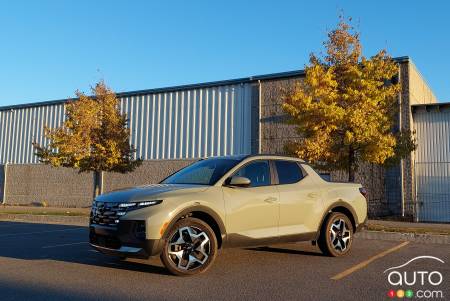
- The starting price is set at $38,499. This gets buyers the Preferred model with all-wheel drive. The same model, with the Trend package, is listed at $41,399, while the Santa Cruz Ultimate gets an MSRP of $44,799. Add $1,825 in fees to each of those figures. The Tucson is simply a more affordable choice, starting at $31,846 when including AWD and topping out at $39,146 for the new N-Line version (this is not including the hybrid variants). The larger Santa Fe, meanwhile, starts at a bit under $34,000.

- Hyundai Canada sold 730 Santa Cruz pickups (sorry, Sports Adventure Vehicles) this year through the end of November (almost exactly matching the sales (adjusted for population) in the U.S., which totaled 7,042 units); in comparison, the automaker moved 24,392 units of the Tucson, and 15,008 of the Santa Fe. The real test will come in 2022, however, when the new model gets a full year to boost its numbers (it only became available during the summer of 2021).
- The Santa Cruz became reality after a long, long gestation period within Hyundai HQ, having first been presented as a concept in Detroit back in 2015. Six long years ago. Amazingly, the final product doesn’t even look very different from that early prototype. So what was Hyundai waiting for all that time? Maybe it needed that time to rethink the Santa Cruz lettering on the back of the concept…
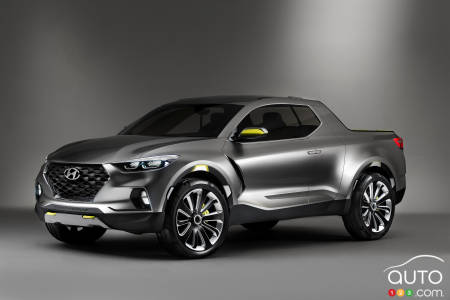

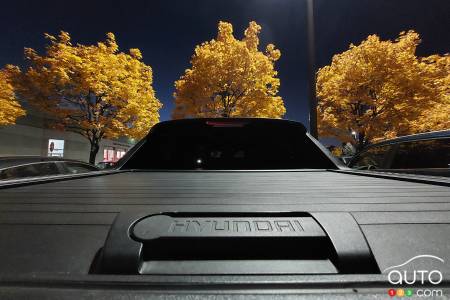
Road Tests and Reviews
